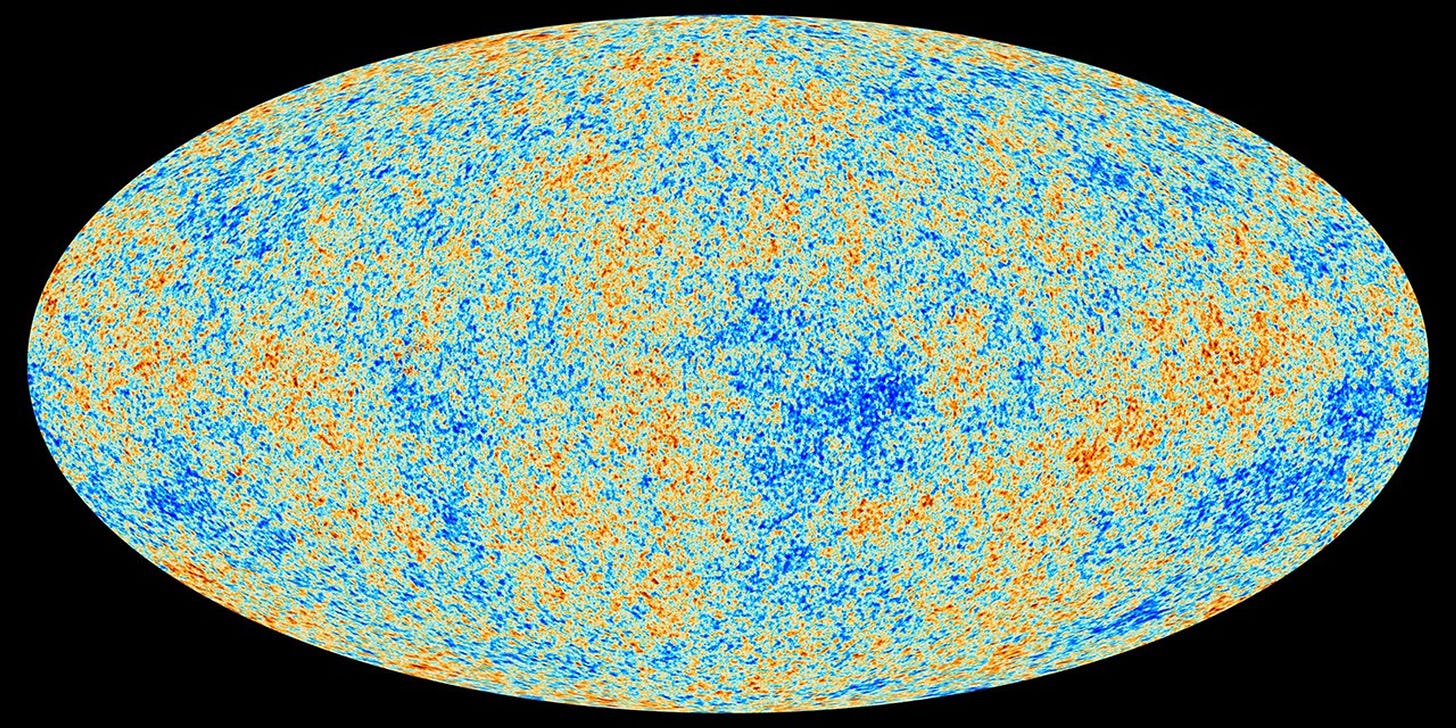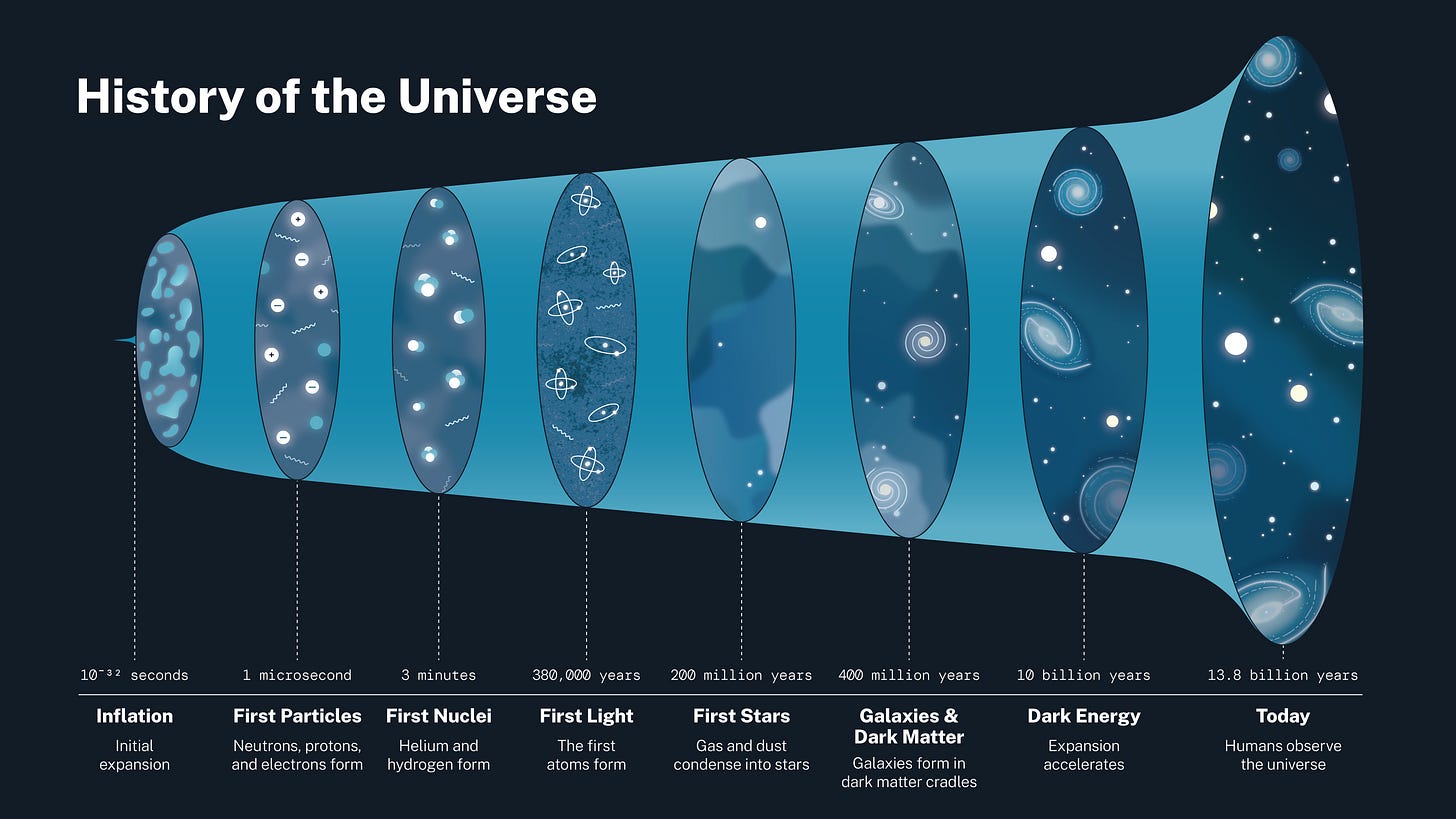Cosmic Soup
What is it made out of?
What is the Universe Made Out Of?
The universe is a practically never-ending collection of all things that exist. Even though most of the universe may seem to be a void of empty space, we have to understand that everything is mostly empty space. If the nucleus of an atom were the size of a marble, the entire atom, including the electron cloud, would be 300 meters across. This is the same length as the Eiffel Tower!
If we look past the absence of matter within atoms, we can see that the universe is a concoction of different elements, unknown substances, and wonders as far as we can see. However, the universe is only theorised to be about 5% matter that we know, with unknown dark energy making up 70% and dark matter making up 25%.
There are 118 elements on the Periodic Table of Elements, and about 98 of them are thought to occur naturally in the universe. Humans have managed to create 28 elements in a lab, with some lasting fractions of a second before fizzling out.
In the elemental soup of the cosmos, hydrogen is the broth, comprising 70% of the universe. Next, the seasonings and spices of the soup would be helium. About 28% of the universe is helium. Then come the little breadcrumbs, oxygen, which makes up around 1% of the universe. The rest of the ingredients are the final garnish on top. They are carbon, neon, nitrogen, magnesium, silicon, iron, sulfur, and others with amounts so small they are negligible. These elements were all created after the Big Bang from stellar processes.
The dark energy and matter are like the ingredients you can taste, but you know are there. The dark energy would be “love” with which the soup was made, and the dark matter would be like an accidental, unknown ingredient that fell into the soup.
What Was the Big Bang?
The Big Bang Theory is the most widely accepted explanation for the origin of the universe. It started at a hot, dense point, much smaller than an atom. The energy within got so large that it released and caused the rapid expansion of the universe for 13.7 billion years and counting.
The universe started expanding faster than the speed of light in a process known as cosmic inflation. This expansion is thought to have lasted about 10⁻³² of a second, according to MIT physicist Alan Guth and his 1980 theory on cosmic inflation. Every particle and building block of matter that will ever exist was created within that infinitesimally small period of time.
Electrons came to be, and quarks combined to form protons and neutrons. In 380,000 years, everything had cooled down enough for these particles to form. The first elements, like hydrogen and helium, formed. The creation of these atoms allowed for electrons to scatter light for the first time, meaning the universe should have gotten its “afterglow”.
The first star was formed a few hundred million years after the Big Bang, with our Sun being born 4.6 billion years ago. With the leftover material surrounding the Sun, the planets were formed, and the rest is history.


